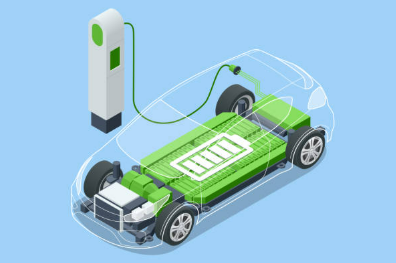Introduction
A smaller EV battery is rapidly becoming the smartest choice for drivers seeking efficiency, affordability, and sustainability in 2025.The race to electrify transportation has given rise to EVs with massive batteries promising 300+ miles of range. But is bigger always better? Not necessarily. In fact, your EV may actually perform better, cost less, and be more sustainable with a smaller battery.
Let’s explore how opting for a smaller battery isn’t about compromise—it’s about smart energy use, smarter design, and a cleaner future.
Why Big EV Batteries Aren’t Always Better
While larger batteries offer extended range, they come with trade-offs:
- Increased Weight: A heavier battery reduces overall efficiency.
- Higher Costs: More lithium = more money, and EV affordability suffers.
- Environmental Strain: Larger batteries require more rare earth materials.
- Slower Charging Times: Bigger capacity = longer charge cycles.
Top 5 Reasons a Smaller EV Battery Is Better for Your Wallet and the Planet
1. Faster Acceleration & Agility
Smaller batteries reduce the overall curb weight, improving performance and responsiveness—especially in urban driving conditions.
2. Eco-Friendly Manufacturing
Less battery material = lower carbon emissions during production. This makes smaller-battery EVs a win for the planet.
3. Lower Upfront Costs
Smaller battery packs reduce MSRP by thousands of dollars—making EVs more accessible for middle-class families.
4. Quicker Charging
Smaller batteries charge faster using standard home chargers—no need for expensive fast-charging infrastructure.
5. Real-World Range Matches Your Commute
Most U.S. drivers average less than 40 miles per day. A 150–200 mile EV range is more than enough for 90% of users.
Smaller Battery, Greater Sustainability
Battery production accounts for up to 50% of an EV’s total carbon footprint. Choosing smaller batteries lowers environmental impact while reducing pressure on global lithium supply chains. It’s a smarter choice for climate-conscious consumers.
EVs With Smaller Battery Options
Some automakers already offer smart-sized battery EVs:
- Hyundai Kona Electric (39.2 kWh)
- Mini Cooper SE (32.6 kWh)
- Fiat 500e (24 kWh)
- Chevrolet Bolt EV (65 kWh but with aggressive pricing)
These EVs serve urban and suburban drivers who prioritize sustainability and affordability over maximum range.
Key Specifications
| Model | Battery Size (kWh) | Range (miles) | MSRP (USD) |
|---|---|---|---|
| Mini Cooper SE | 32.6 | 114 | $30,900 |
| Hyundai Kona EV | 39.2 | 155 | $33,500 |
| Fiat 500e | 24 | 149 | Est. $28,000 |
Top Features of Smaller Battery EVs
Lower Insurance Premiums: Thanks to reduced MSRP
Eco Mode & Regenerative Braking: Boost efficiency
Compact Design: Perfect for city parking
Lightweight Construction: Improves agility
Fast Charging Compatible: Up to 80% in 30 minutes
Conclusion
Your EV doesn’t need a monster-sized battery. It needs the right-sized one. A smaller battery is faster, cheaper, greener, and more practical for everyday use. As infrastructure improves and technology evolves, downsizing your EV’s battery may be the smartest move of all.
FAQs
Is a smaller EV battery enough for long-distance travel?
Not ideal for long trips, but perfect for daily commuting. Consider rental options for occasional long-distance travel.
Do smaller battery EVs qualify for federal tax credits?
Yes! As long as they meet assembly and battery sourcing criteria under the Clean Vehicle Credit program.
Are smaller batteries less reliable?
No—many offer the same warranties and lifecycle as large packs.

